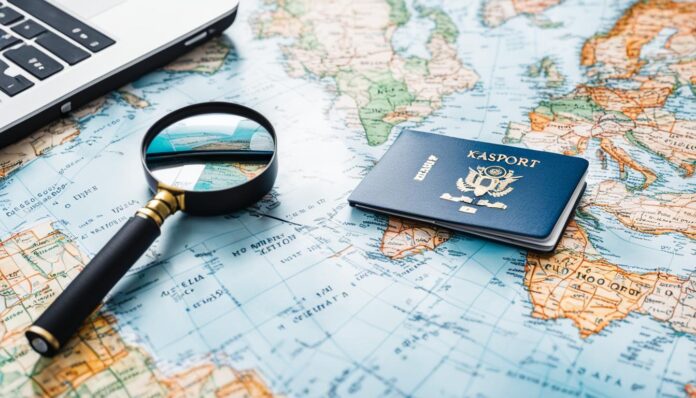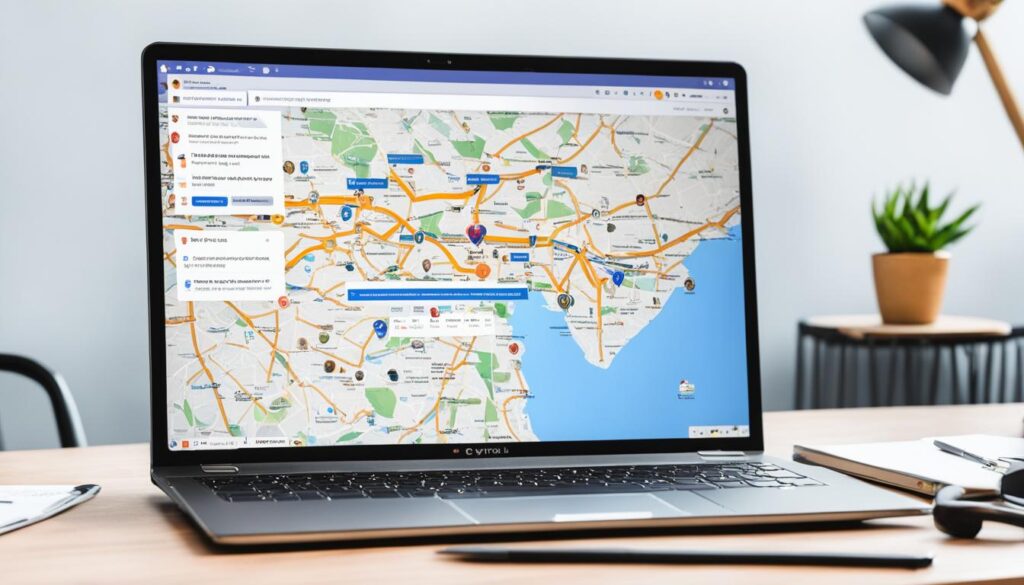Are you struggling to attract readers to your travel blog? Do you want to increase your online visibility and achieve success as a travel blogger? Look no further than SEO for travel blogs!
SEO, or search engine optimization, is a powerful technique that can help you improve your website’s ranking in search engine results pages (SERPs). By optimizing your blog’s content and utilizing best SEO practices, you can attract more readers and achieve your goals as a travel blogger.
In this article, we will explore various strategies, tips, and techniques for optimizing your travel blog for search engines. From conducting keyword research to implementing on-page optimization strategies, we will provide valuable insights to help you improve your blog’s SEO and attract more traffic.
Whether you’re new to SEO for travel blogs or looking to improve your existing strategy, this article has something for you. So, let’s dive in and discover the best SEO practices for travel bloggers!
Understanding the Basics of SEO for Travel Blogs
To succeed in the online world, it’s essential to understand the basic principles of SEO for travel blogs. Without optimizing your travel blog for search engines, you risk missing out on organic traffic, which can lead to fewer readers and engagement.
Keyword Research
Keyword research is a fundamental aspect of SEO for travel blogs. By identifying relevant keywords and incorporating them strategically into your content, you can improve your blog’s search engine rankings and attract more readers. Use a keyword research tool such as Google Keyword Planner or SEMrush to find the right keywords for your content.
On-Page Optimization
On-page optimization includes optimizing your content, meta tags, headings, images, and URLs. Ensure your content is high-quality, engaging and aligns with your keyword strategy. Use descriptive meta tags, headings and image alt tags to help search engines understand what your content is about. Remember to keep the URLs short, descriptive, and keyword-rich.
Link Building
Link building is a vital aspect of SEO for travel blogs, as it helps to build authority and credibility for your blog. Focus on acquiring high-quality backlinks from established travel websites that have a solid reputation in the industry.
Using effective SEO strategies will improve your travel blog’s visibility and ultimately boost your online presence.
By understanding these basic principles of SEO for travel blogs, you can lay the foundation for a successful blog that attracts a significant organic audience.
Conducting Keyword Research for Your Travel Blog
Keyword research is a vital step in improving your travel blog’s visibility on search engine result pages. To conduct successful keyword research, you need to understand your target audience and the words and phrases they use to search for content related to your travel niche.
One effective technique is to use tools such as Google AdWords Keyword Planner and SEMrush to search for relevant keywords and analyze their search volumes and competition levels. You can also explore related searches on Google and social media platforms.
Once you have a list of keywords, it’s important to prioritize and target the ones that are most relevant to your travel blog and have the highest search volumes. This will increase your chances of ranking higher on search engine result pages and attracting more organic traffic to your website.
Remember to incorporate these targeted keywords throughout your blog content, including in your headlines, meta descriptions, and website structure. However, avoid keyword stuffing, which can hurt your blog’s SEO performance.
Below is an example of a keyword list for a travel blog:
| Keyword | Search Volume | Competition Level |
|---|---|---|
| travel tips | 100,000 | High |
| best travel destinations | 50,000 | Medium |
| solo travel | 20,000 | Low |
On-Page Optimization Strategies for Travel Blogs
On-page optimization is essential in making your travel blog visible to search engines. By optimizing your content, meta tags, headings, images, and URLs, you increase your chances of attracting more readers. Below are some best practices for on-page optimization that can help enhance your blog’s rankings:
Content Optimization
When optimizing your travel blog’s content, focus on creating high-quality, engaging material that provides value to your readers. Use your target keywords strategically throughout your blog posts, but ensure that they flow naturally into your content. Additionally, use subheadings to break up your text, making it easy to scan and navigate.
Tip: Conduct thorough keyword research to identify the most relevant and high-traffic keywords for your travel blog. Use long-tail keywords that are specific to your niche, and aim for a healthy keyword density of around 1-2% per page.
Meta Tags Optimization
Your travel blog’s meta tags, including the meta title and description, play an important role in attracting readers to your blog. Ensure that your meta tags accurately reflect the content of your blog posts, and use your target keywords strategically within them.
Tip: Keep your meta title under 60 characters and meta description under 155 characters to optimize them for search engines. Use action-oriented language to encourage readers to click through to your blog.
Image Optimization
Images are an integral part of creating engaging travel blog content. To optimize your images for search engines, ensure that you use appropriate alt tags that accurately describe your images. Additionally, compress your images to reduce their file size, which can improve your blog’s load times.
Tip: Use descriptive, keyword-rich filenames for your images, and include captions and image titles to further enhance their SEO value.
URL Optimization
The URLs of your blog posts play a role in their SEO value. Ensure that your URLs accurately reflect the content of your blog posts, and use your target keywords within them.
Tip: Use hyphens to separate words within your URLs, and avoid using unnecessary parameters or numbers.
Internal Linking
Internal linking is another effective on-page optimization strategy for travel blogs. Linking to other relevant blog posts within your content can provide readers with additional value and improve your blog’s overall navigation. Additionally, internal linking helps to define the structure of your blog and highlight important topics.
Tip: Use descriptive anchor text for your internal links, and ensure that they point to relevant content within your blog.
By implementing these on-page optimization strategies, you can improve your travel blog’s visibility, attract more readers, and enhance its overall SEO value.
Crafting Engaging Content for Better SEO
Creating high-quality content that engages readers while also appealing to search engines is a fundamental aspect of SEO for travel blogs. By following best practices, you can ensure that your content ranks well in search engine results pages and attracts more organic traffic to your website. Here are some essential content optimization strategies:
1. Conduct Keyword Research
Before crafting any content, you should always conduct keyword research to identify relevant and high-traffic keywords to target. By targeting the right keywords, you increase the likelihood of your content appearing in relevant search queries.
Use tools such as Google Keyword Planner or Ahrefs to research keywords that align with your travel niche. Once you have identified your target keywords, incorporate them naturally throughout your content, including in your titles, headings, and body text.
2. Focus on Substance and Quality
Simply targeting keywords is not enough to rank well in search engine results. To appeal to readers and search engines alike, your content must be informative, relevant, and high-quality.
Write comprehensive articles that offer value to your readers, covering topics in depth and providing actionable advice. Use subheadings, bullet points, and images to break up your content and make it more visually engaging.
3. Optimize for Readability
Readable content is essential for engaging readers and improving your SEO. Use simple language, avoid lengthy paragraphs, and include plenty of white space to make your content more digestible.
Use short sentences and paragraphs and structure your content with headings and subheadings to guide readers through your article and make it easier to scan. Use bold and italics strategically to emphasize important points and make them stand out.
4. Incorporate Visuals
Visuals such as images, infographics, and videos can significantly enhance the user experience on your travel blog. Not only do they make your content more visually appealing, but they can also increase dwell time and reduce bounce rates.
Use relevant images and videos to illustrate your points and add context to your content. Use alt tags to describe your visuals in detail, making it easier for search engines to understand your content.
5. Encourage Engagement
Engagement metrics, such as social shares, comments, and backlinks, are critical for improving your blog’s SEO. Encourage engagement by asking readers to share your content, leaving comments, or linking back to your blog.
Include calls to action at the end of your posts, encouraging readers to engage with your content. Engage with your audience on social media, responding to comments and messages to increase engagement and build a loyal following.
Building High-Quality Backlinks for Your Travel Blog
When it comes to SEO for travel blogs, building high-quality backlinks is essential to enhance your blog’s authority and search engine rankings. However, not all backlinks are equal, and it’s crucial to focus on quality rather than quantity.
Here are some effective link building strategies specific to travel blogs:
1. Guest Blogging
Guest blogging involves writing an article for another blog in your travel niche with a backlink to your website in return. This not only provides you with a high-quality backlink but also helps you reach a wider audience and build relationships within your industry.
2. Broken Link Building
Broken link building involves finding broken links on other websites and offering a replacement link to your content instead. This not only helps you earn a valuable backlink but also provides value to the website’s visitors by replacing a broken link with a relevant and informative resource.
3. Influencer Outreach
Collaborating with influencers in the travel industry can have a significant impact on your blog’s visibility and authority. By reaching out to influencers and offering to create valuable content for their audience with a link back to your website, you can gain high-quality backlinks and build your online presence.
| Pro tip | When building backlinks, always prioritize quality over quantity. One high-quality backlink from a reputable source can have a more significant impact on your SEO than hundreds of low-quality backlinks. |
|---|
By implementing these link building strategies, you can improve your travel blog’s visibility, attract more organic traffic, and establish yourself as an authority in the industry.
Utilizing Social Media for Travel Blog SEO
Social media platforms offer tremendous opportunities for travel bloggers to promote their content and improve their website’s SEO ranking. By leveraging social media effectively, you can increase your blog’s visibility, reach larger audiences, and drive more traffic to your website.
One of the best ways to use social media for travel blog SEO is to share your content regularly across different platforms. Posting your latest articles, blog posts, and guides on social media can help attract readers and potential customers to your website. Additionally, sharing informative and valuable travel tips and experiences can help build a loyal following and establish authority in the travel niche.
To optimize your social media presence, it is crucial to pay attention to the preferences and behavior of your target audience. By identifying the social media platforms they prefer and the type of content that resonates with them, you can tailor your social media strategy to maximize engagement and achieve better SEO results.
“Social media platforms offer tremendous opportunities for travel bloggers to promote their content and improve their website’s SEO ranking.”
Another critical factor in leveraging social media for travel blog SEO is building strong relationships with other travel bloggers and influencers. Collaborating with other bloggers can help you increase your reach and exposure as well as attract more backlinks to your website.
Finally, keep track of your social media metrics and analyze your performance regularly. It will help you assess the effectiveness of your strategy, identify your strengths and weaknesses, and adjust your approach accordingly. By continuously optimizing your social media presence, you can improve your blog’s SEO ranking, attract more organic traffic, and achieve long-term success in the online travel world.
Measuring and Analyzing SEO Performance for Travel Blogs
Now that you have implemented various SEO techniques for your travel blog, it’s time to measure and analyze its performance to ensure that your efforts are paying off. Tracking your blog’s SEO success and identifying areas for improvement is crucial to maintaining and improving its visibility. In this section, we will explore various tools and metrics that will help you do just that.
Google Analytics
One of the most powerful tools available to measure your blog’s SEO success is Google Analytics. By using Google Analytics, you can track a plethora of metrics, including the number of visitors to your site, traffic sources, and conversion rates. You can also use it to identify your most popular pages, bounce rates, and exit pages. With this data, you can make informed decisions about how to optimize your blog further.
SEO Ranking Tools
Another valuable tool that you can use to measure your travel blog’s SEO success is an SEO ranking tool. These tools allow you to monitor your blog’s keyword rankings for selected keywords in search engines such as Google and Bing. You can track your rankings over time, compare them to your competitors, and receive alerts to changes in your rankings. Some popular SEO ranking tools include Moz, SEMrush, and Ahrefs.
Backlink Analyzers
Monitoring your blog’s backlinks is also an important aspect of tracking your SEO performance. Backlink analyzers allow you to view your blog’s backlink profile, including the number of backlinks, their quality, anchor text, and more. You can use this information to identify opportunities for link building and to ensure that your blog is not receiving any harmful backlinks. Popular backlink analyzers include Ahrefs, Majestic, and SEMrush.
Content Analysis Tools
Finally, content analysis tools can help you optimize your blog’s content for search engines. These tools analyze your blog’s content and provide suggestions for improving the structure, keywords, and overall quality. Some popular content analysis tools include Yoast SEO, SEMrush, and Surfer SEO.
By using these tools and metrics, you can track your travel blog’s SEO performance and continuously improve its visibility and traffic. Remember to regularly monitor your analytics and adjust your strategies to ensure the best results.
Mobile Optimization for Travel Blogs
As the use of mobile devices continues to rise, optimizing your travel blog for mobile audiences is crucial for maintaining and improving its SEO performance. Ensuring that your website is mobile-friendly can improve your blog’s user experience and increase the likelihood of readers engaging with your content.
Here are a few tips for optimizing your travel blog for mobile devices:
- Use responsive design: This ensures that your website adapts to different screen sizes and orientations, making it easier to navigate and read.
- Enable Accelerated Mobile Pages (AMP): AMP is a technology that is designed to improve the performance and speed of web pages on mobile devices, giving readers a seamless browsing experience.
- Improve page load times: Mobile users expect quick-loading pages. Compress images, eliminate unnecessary plugins and scripts, and reduce the number of HTTP requests to improve load times.
- Create engaging content: Content that has large blocks of text can be challenging to read on mobile devices. Consider using shorter paragraphs, bullet points, and headings to make your content more digestible.
- Keep the design simple: Avoid using large images, complex designs, and elaborate animations that can slow down page load times and make your blog difficult to navigate.
Overall, by optimizing your travel blog for mobile devices, you can improve its SEO performance, increase readership, and create an engaging experience for your audience.
User Experience and SEO for Travel Blogs
Creating a positive user experience on your travel blog is essential for attracting and retaining readers. It also plays a significant role in your blog’s SEO performance. To enhance the user experience on your travel blog, there are several key areas to focus on.
Website Navigation
Your travel blog’s navigation should be intuitive and user-friendly. Make sure your visitors can easily find what they are looking for, such as blog categories, recent posts, and search bars. Consider placing your navigation menu at the top of the page to make it easily accessible.
Page Load Speed
Page load speed is a crucial factor that affects both user experience and SEO. Slow loading pages can cause visitors to leave your site and can lower your rankings in search engine results. To optimize your travel blog’s page load speed, you can compress images, use caching, and minimize plugins and scripts.
Overall Design
The overall design of your travel blog should be visually appealing and engaging. Use high-quality images, clear typography, and a consistent color scheme to create a professional and cohesive look. Avoid cluttered layouts and excessive ads, which can detract from the user experience.
“A well-designed travel blog not only attracts readers but also captures their attention and keeps them coming back for more.”
By prioritizing user experience and implementing these strategies, you can improve your travel blog’s SEO performance and attract more readers, leading to greater success and growth.
Utilizing SEO Tools for Travel Blogs
Optimizing your travel blog for search engines can be an overwhelming task, but utilizing SEO tools can make the process much easier and efficient. In this section, we will explore some popular SEO tools that can help improve your travel blog’s visibility and attract more readers.
1. Google Keyword Planner
The Google Keyword Planner is a free tool that enables you to conduct keyword research and analyze their search volume, competition, and relevance. By identifying the right keywords to target, you can optimize your travel blog content and attract more organic traffic. The Keyword Planner can also help you discover new keyword ideas that you might have overlooked, providing a better understanding of your audience’s search intent.
2. SEMrush
SEMrush is a comprehensive SEO tool that provides a variety of features, including keyword research, competitor analysis, and site audit. With SEMrush, you can gain insights into your competitors’ strategies and identify potential opportunities to improve your travel blog’s SEO performance. Additionally, the tool offers a content marketing platform that helps you optimize your content and track its performance.
3. Ahrefs
Ahrefs is another popular SEO tool that provides a range of features, including keyword research, backlink analysis, and site audit. The tool enables you to identify the most profitable keywords to target and monitor your progress against your competitors. Additionally, Ahrefs can help you analyze your backlinks and identify opportunities for improving your link building strategy, which can significantly improve your travel blog’s visibility.
4. Yoast SEO
Yoast SEO is a popular plugin for WordPress sites that helps optimize your content for search engines. The plugin provides a variety of features, including on-page optimization, meta descriptions, and readability analysis. With Yoast SEO, you can ensure your travel blog content is well-optimized for search engines, making it more likely to rank higher in search results.
By utilizing these SEO tools, you can streamline your SEO efforts for your travel blog and achieve a higher level of success. Whether you’re conducting keyword research, analyzing your competitors, or optimizing your content, these tools can significantly improve your travel blog’s visibility and attract more readers.
Conclusion
Now that you have a better understanding of SEO for travel blogs, it’s time to start implementing these strategies and techniques to improve your blog’s visibility and attract more readers. Remember, optimizing your travel blog with SEO is an ongoing process that requires consistency and dedication.
By conducting keyword research, optimizing your content and meta tags, building high-quality backlinks, and leveraging social media effectively, you can achieve your goals as a travel blogger and stand out in a competitive online world.
Don’t forget to measure and analyze your blog’s SEO performance regularly and make necessary adjustments. And, keep in mind that mobile optimization and user experience are also crucial factors that can impact your blog’s SEO.
With the help of various tools and resources available, you can streamline your SEO efforts and make the most out of your travel blog. Keep experimenting with different strategies and techniques to find what works best for you and your audience.
Remember, by consistently optimizing your travel blog with SEO, you can increase your visibility, attract more readers, and achieve your goals as a successful travel blogger. Good luck on your journey!

















































